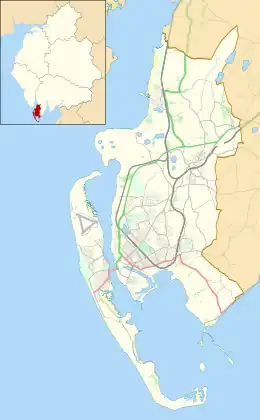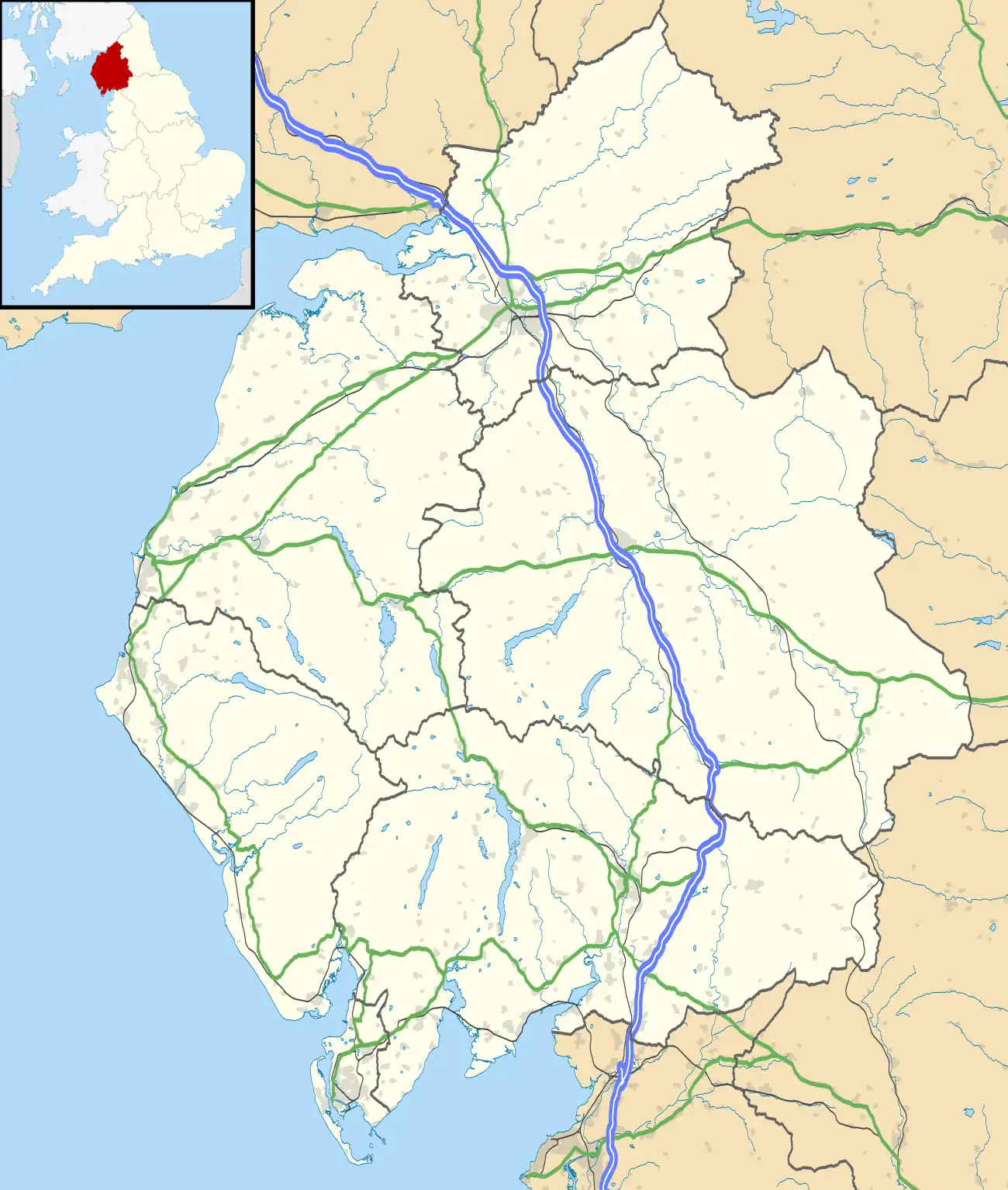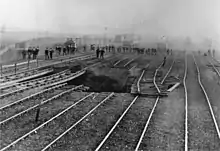Lindal railway station
Lindal railway station served Lindal-in-Furness in the Furness area of Lancashire, England (now part of Cumbria).
Furness line | ||||||||||||||||||||||||||||||||||||||||||||||||||||||||||||||||||||||||||||||||||||||||||||||||||||||||||||||||||||||||||||||||||||||||||||||||||||||||||||||||||||||||||||||||||||||||||||||||||||||||||||||||||||||||||||||||
|---|---|---|---|---|---|---|---|---|---|---|---|---|---|---|---|---|---|---|---|---|---|---|---|---|---|---|---|---|---|---|---|---|---|---|---|---|---|---|---|---|---|---|---|---|---|---|---|---|---|---|---|---|---|---|---|---|---|---|---|---|---|---|---|---|---|---|---|---|---|---|---|---|---|---|---|---|---|---|---|---|---|---|---|---|---|---|---|---|---|---|---|---|---|---|---|---|---|---|---|---|---|---|---|---|---|---|---|---|---|---|---|---|---|---|---|---|---|---|---|---|---|---|---|---|---|---|---|---|---|---|---|---|---|---|---|---|---|---|---|---|---|---|---|---|---|---|---|---|---|---|---|---|---|---|---|---|---|---|---|---|---|---|---|---|---|---|---|---|---|---|---|---|---|---|---|---|---|---|---|---|---|---|---|---|---|---|---|---|---|---|---|---|---|---|---|---|---|---|---|---|---|---|---|---|---|---|---|---|---|---|---|---|---|---|---|---|---|---|---|---|---|---|---|---|
| ||||||||||||||||||||||||||||||||||||||||||||||||||||||||||||||||||||||||||||||||||||||||||||||||||||||||||||||||||||||||||||||||||||||||||||||||||||||||||||||||||||||||||||||||||||||||||||||||||||||||||||||||||||||||||||||||
Lindal | |
|---|---|
| General information | |
| Location | Lindal-in-Furness, Barrow-in-Furness England |
| Coordinates | 54.1691°N 3.1494°W |
| Platforms | 2[1] |
| Other information | |
| Status | Disused |
| History | |
| Original company | Furness Railway |
| Pre-grouping | Furness Railway |
| Post-grouping | London, Midland and Scottish Railway |
| Key dates | |
| 1851 | Opened |
| 1951 | Closed |
| 1951 | Demolished |
| Location | |
 Lindal Location in the present-day Borough of Barrow-in-Furness, Cumbria  Lindal Location in present-day Cumbria, England | |
Context
Lindal station was situated west of London Road railway bridge just a short walk south of the main village and Ulverston Road. It served the local coal and iron ore mines in the local area, as well as the village and local candle factory.
It was opened on 6 May 1851 by the Furness Railway on the Furness Line and was shortly connected to the London and North Western Railway at Lancaster.
The station was closed on 1 October 1951 during a post-war cost cutting drive after nationalisation, by British Railways.
No remains of the station are present today apart from London Road bridge and an empty arch that used to pass the bay platform line to the east of the station.
History
The Furness Railway was authorised in 1844 to build a line which would link Kirkby-in-Furness with Dalton-in-Furness. The railway was extended in places and subsequently took over the Whitehaven and Furness Junction Railway and the Ulverston and Lancaster Railway. The station at Lindal was opened in 1846 and began receiving passengers from further afield in 1862 (when the London and North Western Railway was directly linked). Passengers had already begun to travel from West Cumbria from 1865.
Lindal railway incident

On Thursday 22 September 1892 near Lindal station, a large hole had appeared beneath the railway, taking many lines out of use and swallowing up a locomotive. Rescue attempts were abandoned and the locomotive still lies underground at an unknown depth. The cause of the hole has been debated but remains unclear to this day.
The former site is situated on a wide embankment carrying only the two main lines that remain.
Services
Services ran regularly with workers trains supplementing the local and express passenger services. Freight was transported to other parts of the country by rail or connected with the freight ships at Barrow.
References
Notes
Sources
- Bradshaw, George (1985) [1922]. July 1922 Railway Guide. Newton Abbott: David & Charles.
- Broughton, John R (1996). Past and Present Special: The Furness Railway. Wadenhoe, Peterborough: Past and Present Publishing Ltd. ISBN 1-85895-126-7.
- Butt, R. V. J. (October 1995). The Directory of Railway Stations: details every public and private passenger station, halt, platform and stopping place, past and present (1st ed.). Sparkford: Patrick Stephens Ltd. ISBN 978-1-85260-508-7. OCLC 60251199. OL 11956311M.
- Rush, Robert W. (1973). The Furness Railway 1843-1923. The Oakwood Library of Railway History. Lingfield: Oakwood Press. OL35.
External links
| Preceding station | Historical railways | Following station | ||
|---|---|---|---|---|
| Ulverston Line and station open |
Furness Railway | Dalton Line and station open | ||